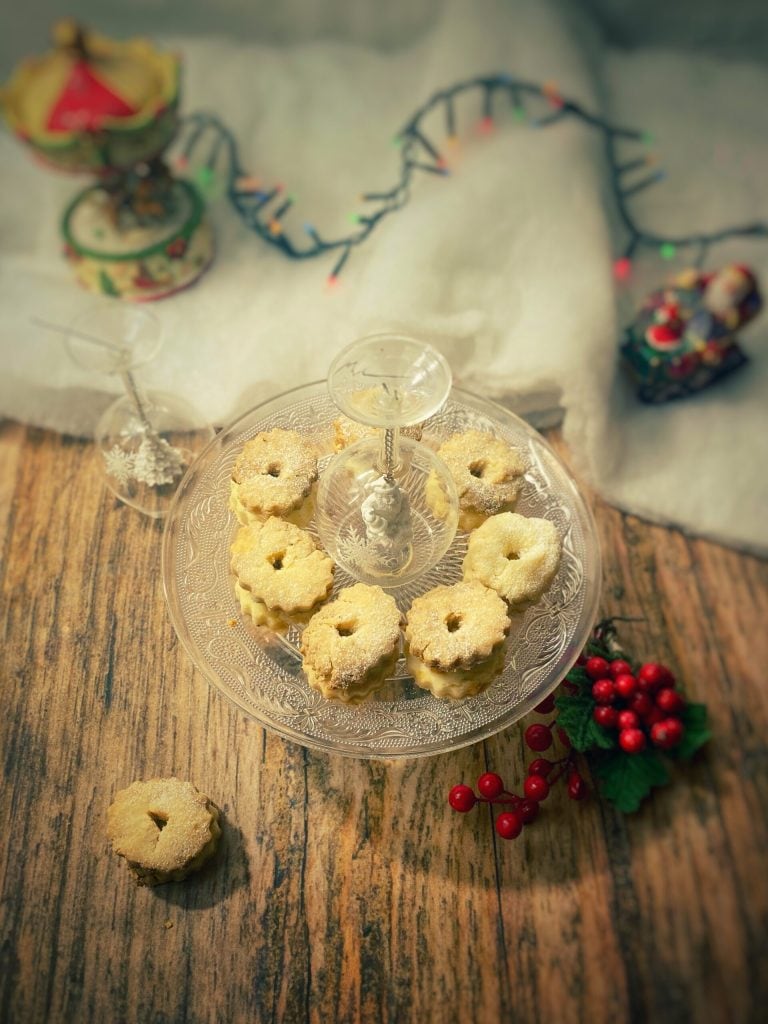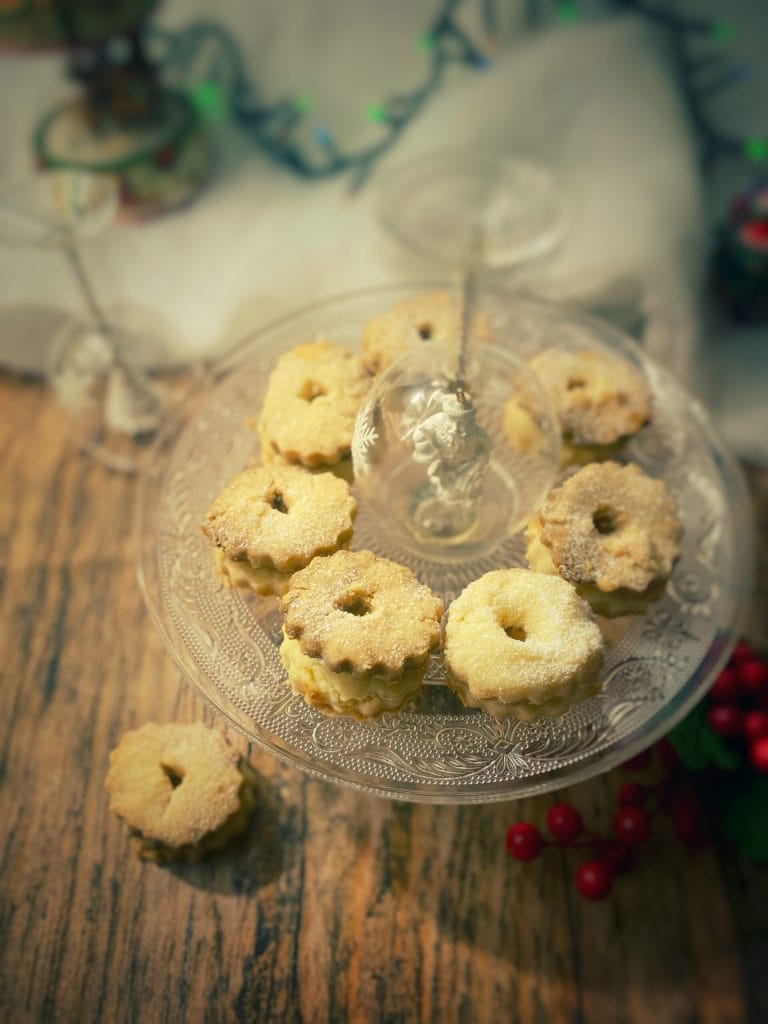The Spitzbuben are Christmas cookies from the Tyrolean, Austrian, German, and Swiss traditions …
The term “Spitzbub” refers to a mischievous boy, and the cookies might be named so because originally the holes created faces.
Spitzbuben is the Austrian name for “Linzer augen”, mainly found in Switzerland, but also in Bohemia, southern Germany, Ireland, and South Tyrol.
The white Linzer dough is a type of Linzer dough common in Austria made with flour, sugar, butter, egg yolk, and grated lemon zest.
Unlike Linzer Augen (which originated as a variant of the Linzer Torte), Spitzbuben are smaller, do not contain egg yolk and do not have chopped almonds in the shortcrust.
A thin layer of currant jam is applied to the lower circular base, followed by another layer of dough with cut-out circular holes: the “eyes”.
After baking, the base and top parts are joined and dusted with powdered sugar.
My version is with peanut butter.
Other typical Christmas cookies:

- Difficulty: Medium
- Cost: Economical
- Rest time: 1 Hour
- Preparation time: 15 Minutes
- Portions: 16 Pieces
- Cooking methods: Oven
- Cuisine: Italian
- Seasonality: Christmas
Ingredients
- 3 cups flour
- 1 cup powdered sugar (or granulated)
- 1 cup butter
- to taste peanut butter (or currant jam)
- to taste powdered sugar
Tools
- 1 Cookie Cutter circular
Steps
Mix the flour with the sugar, cold butter, and a pinch of salt.
Create a dough ball, wrap it in cling film, and let it rest in the fridge for 1 hour.
Roll out the dough and cut the cookies. Apply holes (or a single hole) on half.
Bake in a static oven at 350°F for 14 minutes.
Let cool.
On the lower part, spread half a teaspoon of peanut butter (or currant jam as in the original recipe), dust the top part with powdered sugar.
Join the two parts.

FAQ (Questions and Answers)
What are Spitzbuben called in Germany?
In Germany Spitzbuben are also called “Johannes-Plätzchen“.
The name Johannes-Plätz can likely be traced back to Johannes von Redsburg. Following the Thirty Years’ War, between 1618 and 1648, famine broke out in Europe.
It is said that master baker Johannes von Redsburg prepared quick and economical sweet bread, which he spread with jam and gave to those with nothing to eat.
In the Palatinate, they are also known as Pfauenauge.
In Carinthia, the name Linzer Rad is common.
The name Hildabrötchen is common in Baden and dates back to the last grand duchess of the region, Hilda von Nassau. Baking recipes with this name have been found at least since 1900.
But there is also a variant in Switzerland: Ochsenauge or Ochsenäuglein, meaning bird’s nest: a Linzer or macaron is positioned on a shortcrust base in a circle, in the center of which jam is filled before baking.
Decorations with granulated sugar or almonds are common.

